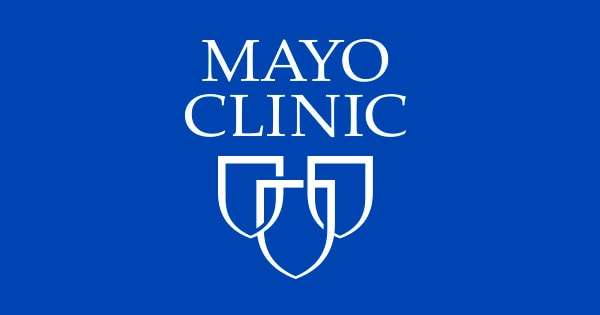
Although you may think of occupational therapists working mainly with people with chronic conditions over considerable time, they also can work in hospitals as part of acute care teams. In fact, over 27% of occupational therapists work in a hospital setting, largely supporting teams in emergency medicine, intensive care, critical care, urgent care, and trauma care.
To better understand the key role that these therapists play and how they can affect the acute care experience, it’s helpful to recognize dynamics of the care setting and the expertise occupational therapists provide.
What Exactly Is Acute Care?
Acute care is the branch of medicine that treats patients with critical medical conditions. A patient receiving acute care has had an emergency medical issue that needs immediate attention and may even be life-threatening. For example, heart attacks, stroke, and other serious injuries commonly require acute care.
The healthcare team in the acute care unit works under pressure to stabilize the patient, address life-threatening issues, and transition the patient to long-term rehabilitative care. A second goal is to improve the patient’s condition to prevent physical or cognitive complications. Unlike chronic care, which is a long-term process, acute care delivery is usually brief and is typically reserved for the hospital or emergency department setting.
Occupational Therapy in Acute Care
Occupational therapy in acute care helps patients who may have physical or cognitive impairments recover the ability to carry out the meaningful activities of daily living. Working as part of a healthcare team alongside doctors, nurses, a case manager, and others throughout the rehabilitative process, occupational therapists create a program that will help their patients do the things they need to do and the things they want to do.
Occupational therapy in acute care helps patients stabilize, mobilize, and experience a successful discharge from the acute care setting. Occupational therapy as part of acute inpatient rehab serves as a complement to other services provided in acute care settings.
Numerous studies have shown occupational therapy’s effectiveness in acute care settings. Occupational therapy can serve to combat significant neuromuscular complications in the long term. Also, occupational therapy can play a key role in early mobilization of patients in the intensive care unit to improve neuromuscular weakness and physical function. Another study involving organ transplant patients showed that just two hours of occupational therapy could reduce the level of medical assistance the patient would need over time. In the bigger picture, early occupational therapy interventions while patients are still in acute care can make a significant difference in their functioning while recovering.
8 Things to Expect from Occupational Therapy in Acute Care
We know that occupational therapy makes an impact in acute care, but what exactly do therapists do on a day-to-day basis? The answer is “Quite a bit.” Occupational therapy interventions can encompass everything from help with diet and eating to teaching self-care skills. Here are eight important activities occupational therapists can help patients with in the acute care setting:
1. Help with movement
Occupational therapists often train patients in safe ways to carry out a range of motion despite their limitations. They also may instruct families and caregivers on the best ways to support mobility of their loved one. For example, they may show ways to safely aid the patient during transfers in and out of a car.
2. Help with cognitive impairments
When a stroke or car accident leaves a patient with cognitive deficits, occupational therapists will often be the ones to teach proven compensatory techniques to make it easier to carry out meaningful activities of daily living despite the impairments.
3. Help with assistive devices
Occupational therapists will often assess and recommend the proper assistive devices for patients, from splints and positioning devices to wheelchairs. Occupational therapists also will teach patients how to use these devices properly to optimize their mobility.
4. Help with eating
Occupational therapists can help decide the type of diet the patient might need to eat while he or she is recovering and teach strategies for eating safely if chewing or swallowing has been impaired because of an illness or injury.
5. Help with self-care
Occupational therapists also work with patients who have limited ability with bathing, dressing, grooming, and other activities that preserve well-being. Here, too, they will teach compensatory strategies that can help the patient carry out these tasks safely while conserving energy.
6. Help with mental health
Managing mental health needs is an important part of helping patients function after an illness or injury. Occupational therapists are trained in providing mental health support during the recovery process. Occupational therapists often teach stress management techniques, coping methods, and goal setting.
7. Help with pediatric care
Occupational therapists will work with families to help children resume their normal activities at school and at home and strengthen socialization skills when needed. Occupational therapists work closely with the child and help to train families on reaching developmental goals.
8. Help with discharge planning
Occupational therapists in the acute care setting help develop a plan for a safe discharge and recommend the best ways to safely transition to the next level of care.
At Rehab Select, we provide interdisciplinary care, bringing together the expertise of occupational therapists, case managers, nurses, physical therapists, speech-language pathologists, and physicians to meet the patient’s needs. Our occupational therapists can create an individualized care plan and goals specific to your injury or illness. Depending on need, patients can receive personalized one-on-one treatment up to seven days a week for up to three hours a day.
Learn how Rehab Select can help meet you or your loved one’s occupational therapy needs during short-term and long-term rehabilitation at http://www.rehabselect.net.


If you are wondering if you could benefit from occupational therapy, you’ve come to the right place. In this chapter, we’ll look at some typical populations for which this therapy is most useful. In particular, occupational therapy can greatly benefit those coping with symptoms from the conditions listed:
- Neurological injury or stroke
- Workplace and orthopedic injuries
- Severe accident injuries
- Hand and upper extremity injuries
- Chronic pain or arthritis
- Pulmonary or cardiac issues
- Mental health conditions
- COVID-19 long-term symptoms
Let’s examine in detail how OT can be beneficial for certain conditions.
Benefits of Occupational Therapy
One of the most common benefits of occupational therapy is providing work rehabilitation. After an injury in the workplace, the patient who cannot perform all the tasks he or she was previously responsible for at work will need to regain the ability to do so over time. Losing the ability to work as you used to because of an illness or injury is a profoundly disruptive life event that may affect an individual’s well-being and self-esteem.
Worker’s Comp Injuries
By understanding the work environment and the worker’s current capacity to carry out the job, an OT can design interventions and then implement them in a structured environment.
Here are a few of the ways patients with a worker’s comp injury can expect occupational therapy to assist with work rehabilitation:
- Work Conditioning – This conditioning program is geared toward helping workers regain strength, mobility, endurance, power, and other aspects of functioning with the specific return-to-work goals that have been defined. Typically, occupational therapy exercises in a work conditioning program address musculoskeletal and cardiovascular systems. The program may require the patient to simulate tasks he or she would typically do at work in a supervised setting for 2 to 4 hours a day, 3 to 5 days a week.
- Work Hardening – Work hardening is a highly structured program that requires a multidisciplinary team. Patients typically participate in this program five days a week for at least a few hours. Work hardening programs can be centered around work simulations or completed at the actual job site.
- Function Capacity Evaluation (FCE) – An FCE helps with the planning for a rehabilitation program and provides evidence for worker’s compensation settlements and disability status. Occupational therapists are highly qualified to evaluate the patient’s ability to participate in a job role. In fact, OTs may conduct multiple assessments of patients to determine their ability to carry out different types of work.
- Environment Modifications – When an occupational therapist determines that patients can return to work but with physical adjustments to their workplace, they can work with the employer to devise strategies for the employee, such as altering the design of the workplace, introducing tools to help the employee to perform responsibilities, or identifying methods to reduce noise.
- Transitional Return to Work – The purpose of these programs is to help patients become accustomed to working in their environment again while readjusting to the normal routines with supervision for safety purposes. First, the occupational therapist will assess the patient’s capabilities, the job-related tasks, and the work environment to make recommendations on how the patient should begin and gradually build up to his or her maximum capacity. Next, the therapy team will monitor the patient’s ability to complete job-related activities through the program and help direct the patient to perform progressively more challenging tasks. This approach allows patient time to heal gradually while adding work responsibilities and, often, offers the employer a swifter return to normal without having to train a new employee.
Recovering from a Stroke
As we all know, the effects of a stroke can be debilitating. But there is hope, and occupational therapy can play a critical role in recovery. According to the American Stroke Association, 10 percent of stroke survivors recover nearly completely, while another 25% recover with minor impairments.
When the blood flow to your brain is interrupted by a blood clot or a blood vessel that bursts, strokes prevent oxygen and nutrients from reaching the brain. As a result, a patient may suffer paralysis on one side or both sides of the body or wrestle with speech, language, vision, or memory problems. Occupational therapy can often mitigate these effects. Stroke patients who receive occupational therapy are much less likely to deteriorate and more apt to gain the ability to perform independent activities of daily living.
Throughout a treatment course, an occupational therapist and multidisciplinary team will focus on helping the patient regain the ability to live independently, resume normal levels of activity. As the stroke patient gradually learns new skills that enable them to live more independently, they will also gain more hope, optimism, motivation and self-confidence.
For stroke patients, the benefits of occupational therapy include the following:
- Self-Care Skills – Occupational therapists can teach stroke patients strategies for self-care for tasks like bathing and grooming, as well as introduce adaptive equipment and changes to their environment to make these tasks more manageable.
- Home Safety – Often, occupational therapists will evaluate and adjust how a patient’s home is laid out and work with them to safely perform things like rising from bed, getting dressed, cooking, showering, etc. within the home.
- Strength and Endurance – Exercises can be an important way to regain strength and freedom of movement. The occupational therapist can create a program of exercises combined with normal activities (for example, cooking or doing laundry).
- Cognition – Stroke rehab exercises not only improve cognition, but also help reveal practical strategies to work around limitations. For instance, an OT can help a patient break up activities into more manageable parts, use daily planners, and rely on other compensatory strategies.
- Healthy Lifestyle – Stroke patients can alter their lifestyle to help prevent a second stroke. An occupational therapist can help create a lifestyle plan, teach supporting healthy eating and activity strategies, monitor progress, and help the patient stay motivated to achieve these goals.
- Motivation and Confidence – Naturally, stroke patients need plenty of motivation to take part in the stroke rehab exercises that will help them function better in daily life. Occupational therapists provide psychological support and help their patients set goals during rehab.
Joint Replacement Patients
Occupational therapy can be an integral part of the patient’s rehabilitation after a joint replacement surgery and throughout the treatment of arthritis. People might need joint replacement surgery for various reasons. Often, surgery is needed because of arthritis, a fracture, or another medical condition.
Although the actual surgery may only take a few hours, the pain and discomfort from the new joint might last months while the patient’s muscles adjust to the new joint as they resume normal movements.
The benefits of occupational therapy are most critical after surgery. During the rehabilitation period, occupational therapists help patients who have had a joint replacement adjust to living independently post-operation. For example, patients who have had knee replacement surgery may have trouble standing, walking, or bending. Patients who have had hip replacement surgery may have trouble sitting up in bed.
Additionally, the occupational therapist’s role often involves managing arthritis through various interventions to help patients feel less pain, less fatigue, and protect their joints. Patients with arthritis may find it difficult to move the parts of their bodies that are affected by joint inflammation, the lack of movement may lead to the arthritis condition becoming worse.
For arthritis, an occupational therapist can:
- Recommend adaptive equipment to put less stress on your joints, including orthotic devices
- Use heat and cold to reduce pain around your joints
- Introduce ways to support your joints while you are doing activities or resting
- Train you on how to conserve energy and avoid overuse of your joints
Early intervention for joint replacement surgeries and arthritic conditions can help patients go on to achieve maximum functionality.
Recovery from Cardiac Diseases
Cardiovascular diseases are pervasive in our society. In fact, it’s the leading cause of death worldwide, according to the World Health Organization. After a patient suffers from a cardiovascular disease, he or she may experience fatigue, shortness of breath, depression, anxiety, memory and concentration problems, and difficulty participating in everyday activities. These functional limitations can be emotionally distressing, but with OT, there is hope.
According to the American Heart Association, cardiac rehabilitation is a medically supervised program that consists of exercise training, education on heart-healthy living, and counseling to reduce stress and help patients become active again. Occupational therapy plays a key role in a cardiac rehabilitation program. A fundamental aspect of cardiac care is that it treats the patient holistically.
Occupational therapists can help patients with cardiovascular disease in the following ways and more:
- Education – Occupational therapists can teach patients how to monitor their blood pressure, blood sugar, and heart rate. Patients who are proactive about managing their condition will learn better ways to recognize signs that may require immediate medical attention.
- Exercise – Occupational therapists recommend appropriate levels and intensity of exercises for patients in a cardiac rehabilitation program; the right amount of exercise will help them get in better condition and strengthen muscles without stretching them beyond their capabilities.
- Stress Management – Occupational therapists evaluate stress in the context of the patient’s life, environment, and cardiovascular disease. With an array of tools, including teaching mindfulness-based stress reduction techniques, behavior modifications, environmental modifications, cognitive restructuring, and energy conservation techniques, OTs teach patients how to relieve the stress associated with feeling pain or discomfort.
- Independence – Occupational therapists assist patients with employing compensatory strategies to regain the ability to carry out certain activities, including using adaptive equipment. One example is teaching the patient to sit in a chair instead of standing while doing laundry to help them conserve energy.
- Return to Work – Research has shown that work is beneficial to mental health and well-being, but patients with cardiovascular disease may feel conflicted about whether to return to work and how to return. Occupational therapists can evaluate the types of work the patient may want to pursue and the patient’s capacities.
Cardiovascular disease can result in many complications in the patient’s life, but even those with the most severe conditions can show dramatic improvement. The benefits of occupational therapy include helping patients regain participation in the activities that make them independent and productive members of society. Having the right team of experts on your side makes a big difference to a patient’s success.
Addressing Pulmonary Issues
 Pulmonary diseases, also known as lung diseases, encompass all of the issues with the lungs that prevent them from functioning properly. As such, pulmonary issues affect how well a person can breathe. Difficulty breathing can be caused by asthma, pneumonia, pulmonary edema, pulmonary embolism, pulmonary hypertension, and lung cancer. One of the most common pulmonary issues is chronic obstructive pulmonary disease (COPD).
Pulmonary diseases, also known as lung diseases, encompass all of the issues with the lungs that prevent them from functioning properly. As such, pulmonary issues affect how well a person can breathe. Difficulty breathing can be caused by asthma, pneumonia, pulmonary edema, pulmonary embolism, pulmonary hypertension, and lung cancer. One of the most common pulmonary issues is chronic obstructive pulmonary disease (COPD).
The good news is that patients who enroll in a pulmonary rehabilitation program can dramatically improve their capabilities and quality of life. Occupational therapy is one aspect of a comprehensive program that includes exercise, education, and support provided by a team dedicated to pulmonary rehabilitation, but the benefits of occupational therapy are many.
Pulmonary rehabilitation programs include supervised physical exercises specifically designed to improve heart and muscle strength, increase energy levels, and help patients use oxygen more efficiently.
An important component of a pulmonary rehabilitation program is occupational therapy. Problems with breathing can limit a patient’s ability to be independent and carry out everyday activities. An OT can help patients battling pulmonary issues practice strategies to reduce oxygen consumption in their activities of daily living.
The occupational therapist will teach the patient various adaptive techniques. These could include:
- Methods of breathing while they perform the activity
- How to carry out the activity using less energy
- How to rest during the activity
- How to modify the environment while performing the activity
An OT is useful in helping patients perform activities such as doing laundry, making the bed, putting on clothes, and cooking in ways that conserve oxygen.
Long-Term COVID-19 Recovery
While most people who develop COVID-19 fully recover, a small minority of patients will experience persistent COVID symptoms for three months or longer. Known as “long COVID” or “long-haul COVID,” this condition can affect patients of all ages, and typically presents with some of the following symptoms: chest pain, trouble breathing, headaches, nausea, anxiety, depression, and fatigue. Long-haul COVID can keep patients from returning to normal life.
A COVID-19 recovery program usually involves a multidisciplinary team to deliver medical treatment, physical therapy, occupational therapy, speech therapy, and counseling. The benefits of occupational therapy to long-haul COVID patients include increased independence and autonomy.
The debilitating fatigue, loss of energy, and weakness may prevent many long-haul COVID patients from being able to perform the normal activities of daily life. Without help, patients risk ignoring the symptoms until they deplete their energy by overexerting themselves.
Occupational therapists teach patients in a COVID recovery program to conserve energy by teaching them how to develop a variety of evidence-based skills and strategies gradually.
OTs help people in COVID-19 recovery understand that recovery is a process, and, therefore, patience and persistence are going to be very important. Previously normal activities may now require planning. Occupational therapists can help patients devise ways to carry out activities without exhausting their energy reserves. This might include alternating heavier and lighter tasks or eliminating unnecessary tasks altogether.
Occupational therapists can also help with positioning. For example, long-haul COVID patients who are struggling with energy may want to find ways to sit for some tasks, like doing the laundry while sitting in a chair. Or they may choose to practice ways to support themselves, like using a reacher instead of their arms when getting something on a high shelf.
Helping patients relax between activities by using breathing techniques and good sleep habits is another critical aspect of occupational therapy. Occupational therapists may also work with patients to gradually help them return to work or find work that best suits their capabilities.
For a COVID-19 patient to achieve the best results, occupational therapists should also focus on improving a patient’s mental health and mindset, which are essential to a successful recovery process.
Healing from Mental Health Issues
 People who are diagnosed with depression, bipolar disorder, schizophrenia and other psychoses, dementia, as well as developmental disorders including autism can find them so debilitating that they struggle with the normal activities of daily life. Therefore, the return to a “normal life” may take a deliberate process of recovery.
People who are diagnosed with depression, bipolar disorder, schizophrenia and other psychoses, dementia, as well as developmental disorders including autism can find them so debilitating that they struggle with the normal activities of daily life. Therefore, the return to a “normal life” may take a deliberate process of recovery.
Occupational therapy is uniquely suited to address these issues. In fact, occupational therapy originated in the mental health setting: The first occupational therapists worked with American soldiers who came back home “shell shocked” after World War I, teaching them crafts and vocational skills that would improve their morale. From there, occupational therapy continued into community health centers after the deinstitutionalization movement in the mid-20th century.
In the past most occupational therapists once worked in mental health, and although that number has decreased over the years, new opportunities are arising for OTs to play a continued and vital role in the treatment of mental health.
Medication prescribed by doctors and talk therapy may not address the significant changes to the patient’s life that their mental illness has caused. That’s where the benefits of occupational therapy come in.
In rehabilitation and pediatric settings, occupational therapists teach clients useful skills and strategies that can assist them on the road to recovery. First occupational therapists determine which activities the patient needs, and which ones are most meaningful to them.
This type of holistic approach focuses on the occupations that enable them to participate fully in life, including education, work, social activities, and leisure. In addition, therapy will focus on well-being by instilling hope, motivation, and empowerment in clients, as well as helping them build resilience.
Occupational therapists aim to address one of the most devastating effects of mental illness: loss of motivation, self-esteem, and the tendency to isolate. The isolation may lead to further negative thoughts and exacerbate conditions like depression. However, the need to do things is an essential part of being human. By building skills and adapting their environment to keep them active, OTs help patients regain a sense of accomplishment and satisfaction in being able to take care of themselves.
For example, here are some of the interventions that occupational therapists may implement with mental health patients:
- Teaching interpersonal and social skills
- Collaborating with clients on career choices
- Collaborating with clients on job placement and career skills
- Helping clients develop and accomplish leisure activities
- Providing cognitive behavioral therapy to help clients think more realistically
- Providing cognitive rehabilitation to address cognitive deficits
No matter the illness or injury, occupational therapy can be a crucial component of a successful recovery. Enduring a setback, even a permanent one, to some of your physical abilities doesn’t always have to mean you’ll have to live with insurmountable adverse effects. Help is available. The key is knowing what to look for in an occupational therapy program.




